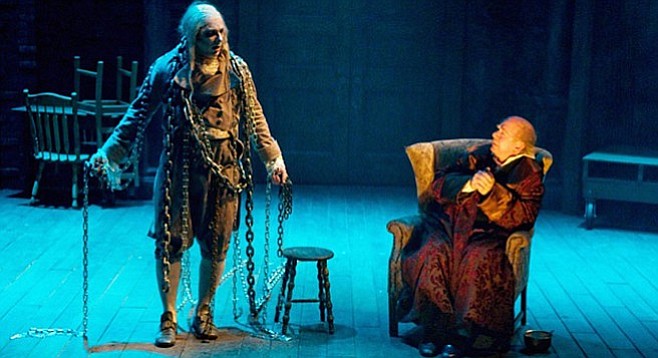 Facebook
Facebook
 X
X
 Instagram
Instagram
 TikTok
TikTok
 Youtube
Youtube

As the redemption of Scrooge drew nigh, I realized that there could be a better application of these characters. What if all the characters in A Christmas Carol are aspects of each of us? What I mean is that all of us are all of those characters at one time or another.
We are all misers like Marley at some point. We are all pure-hearted yet crippled like Tiny Tim. We are all timid victims like Bob Cratchit. We are all bitter and resentful like Mrs. Cratchit. We are all optimistic and generous like Fred, and we all have the potential to be redeemed like Scrooge.
The characters are so one-dimensional that it feels as though they require us to interpret them as different aspects of an individual — perhaps Dickens himself.
In Brothers Karamazov, Dostoevsky gives each of the brothers and the father elements of himself. To the father he gives his sensuality. To Dimitri he gives his gambling addiction. To Ivan he gives his intellectual doubt of religion. To Alyosha he gives his faith. To Smerdyakov he gives his epilepsy.
Brothers Karamazov is an allegorical account of Dostoevsky’s own internal struggles. I wondered if the same thing might be happening with Dickens in A Christmas Carol.
The better parts of Scrooge, such as Fred and Tiny Tim, become more influential as he confronts the truth of his past, present, and future.
The redemption by Christmas spirit is something that doesn’t read much these days. The Victorians were the culture that established most of our modern-day Christmas, and Dickens played his part. But Christmas spirit has reached its peak and is on its way out, I’m afraid.
However, the dark night of the soul a la Ebenezer Scrooge will never go out of fashion.
A Christmas Carol is playing at Cygnet Theatre in Old Town through December 24.


As the redemption of Scrooge drew nigh, I realized that there could be a better application of these characters. What if all the characters in A Christmas Carol are aspects of each of us? What I mean is that all of us are all of those characters at one time or another.
We are all misers like Marley at some point. We are all pure-hearted yet crippled like Tiny Tim. We are all timid victims like Bob Cratchit. We are all bitter and resentful like Mrs. Cratchit. We are all optimistic and generous like Fred, and we all have the potential to be redeemed like Scrooge.
The characters are so one-dimensional that it feels as though they require us to interpret them as different aspects of an individual — perhaps Dickens himself.
In Brothers Karamazov, Dostoevsky gives each of the brothers and the father elements of himself. To the father he gives his sensuality. To Dimitri he gives his gambling addiction. To Ivan he gives his intellectual doubt of religion. To Alyosha he gives his faith. To Smerdyakov he gives his epilepsy.
Brothers Karamazov is an allegorical account of Dostoevsky’s own internal struggles. I wondered if the same thing might be happening with Dickens in A Christmas Carol.
The better parts of Scrooge, such as Fred and Tiny Tim, become more influential as he confronts the truth of his past, present, and future.
The redemption by Christmas spirit is something that doesn’t read much these days. The Victorians were the culture that established most of our modern-day Christmas, and Dickens played his part. But Christmas spirit has reached its peak and is on its way out, I’m afraid.
However, the dark night of the soul a la Ebenezer Scrooge will never go out of fashion.
A Christmas Carol is playing at Cygnet Theatre in Old Town through December 24.
Comments